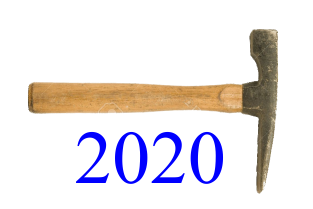Olivia Rolfe

B.Sc. (Honours) Thesis
THE STRENGTH EVOLUTION OF A CRUSTAL SCALE SHEAR ZONE
(PDF - 28.6 Mb)
The brittle-ductile transition zone, thelocation of greatest strength in the crust,can be determined through the construction of a stress profilewith depth. The profile is constrained from the calculated flow stresses for a sequence of rocks collected at different crustal depths and the frictional flow envelope for the brittle crust. Grain microstructure and texture reflects the variations in strainand temperature, and therefore flow stresses, during exhumation through the aseismic ductile regions at depth until the brittle upper region of the megathrust. Quartzite mylonites of the Lesser Himalayan Sequence were sampled along a 3 km longtransect across the footwall of the Main Central Thrust (MCT) in Bhutan. The quartz crystallographic preferred orientations (CPO) were obtained through electron backscatter diffraction. The orientation maps indicate that the quartz microfabric contains two grain size populations. The large relict grains display grain boundary migration as well as a partial foam texture indicated bystraighteningof grain boundaries. The smaller grain population demonstrate subgrain rotation recrystallization. The quartz CPO is characterised bya Type I partial cross girdle in the c-axis, which corresponds to plane strain.Orientation maxima of c-and a-axes indicate a dominant rhomb <_a_> slip system. A grain size piezometer was applied to determine the flow stresses. These valueswere combined with independently determined deformation temperatures and pressures to calculate strain rates. The large grain population presented only slight variation in flow stress, but the strain rates in the middle of the shear zone were two orders of magnitude higher than at its boundary. The maximum flow stress obtained from the recrystallised grains was approximately 110 MPa, which was assumed to be the stress at the brittle-ductile transitionand therefore the strongest part of the Himalayan crust. Construction of the stress envelope for the brittle regimeof the crust indicates that the pore fluid pressure along the MCT of λ= 0.85 with a friction coefficient of 0.4 is required to allow slip along the thrust. However, the geothermal gradient varies across the MCT due to overthrusting of hot over colder rocks. Therefore, the generated strength profile is only applicable to the shear zone, not to the encompassing continental crust. Finally, because the calculated stresses were not effective coevally, the strength profile is actually a stresshistory of the shear zone.
Keywords: Crustal strength, stress profile, Brittle ductile transition zone, Main Central Thrust, Electron backscatter diffraction
Pages: 73
Supervisor: Djordje Grujic



